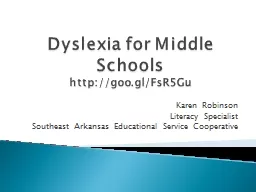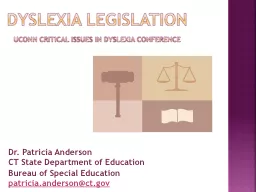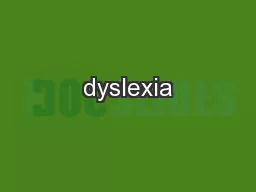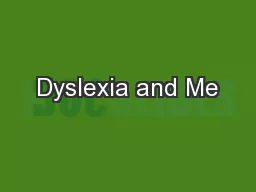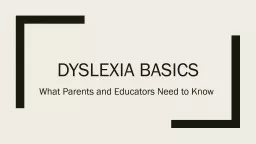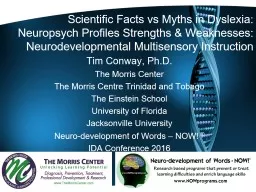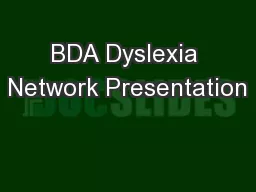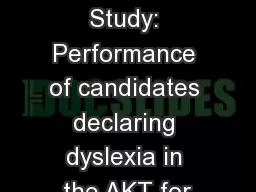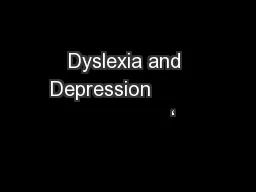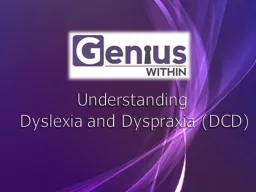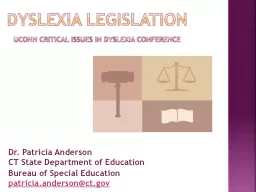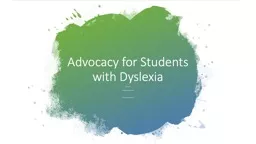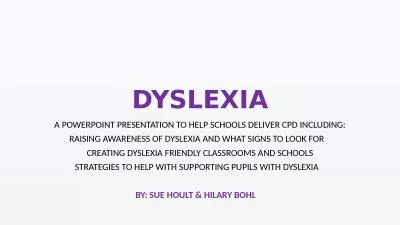PPT-Dyslexia for Middle Schools
Author : pasty-toler | Published Date : 2017-06-01
httpgooglFsR5Gu Karen Robinson Literacy Specialist Southeast Arkansas Educational Service Cooperative What is Dyslexia How do you identify characteristics What can
Presentation Embed Code
Download Presentation
Download Presentation The PPT/PDF document "Dyslexia for Middle Schools" is the property of its rightful owner. Permission is granted to download and print the materials on this website for personal, non-commercial use only, and to display it on your personal computer provided you do not modify the materials and that you retain all copyright notices contained in the materials. By downloading content from our website, you accept the terms of this agreement.
Dyslexia for Middle Schools: Transcript
Download Rules Of Document
"Dyslexia for Middle Schools"The content belongs to its owner. You may download and print it for personal use, without modification, and keep all copyright notices. By downloading, you agree to these terms.
Related Documents

